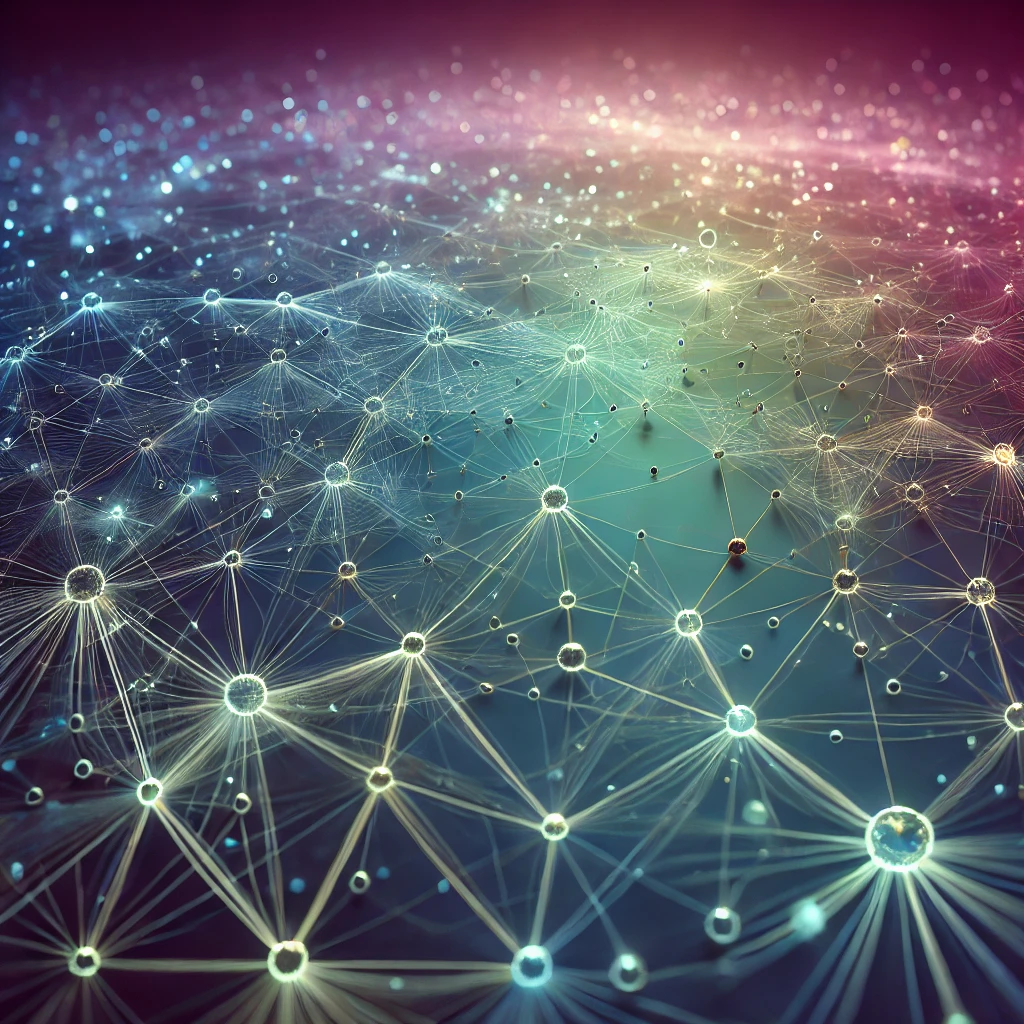Historical Development of Complexity Theory
The study of complexity has deep roots in multiple disciplines, and its development can be traced through several key milestones and intellectual movements.
1. Early Foundations: Chaos Theory and Non-linear Dynamics (19th–20th Century)
The origins of complexity theory can be traced back to the study of chaos and non-linear dynamics. In the late 19th century, French mathematician Henri Poincarélaid the groundwork for chaos theory when he studied the three-body problem in celestial mechanics. He discovered that even simple systems with just three interacting bodies could exhibit unpredictable behavior due to sensitivity to initial conditions.
Later, in the mid-20th century, meteorologist Edward Lorenzfamously coined the term “butterfly effect” while studying weather patterns. In 1963, Lorenz discovered that small differences in initial conditions in his weather models led to vastly different outcomes, illustrating the concept of deterministic chaos.
These early insights into chaos and non-linear dynamics set the stage for understanding how small changes in complex systems could lead to large-scale, unpredictable effects.
2. Cybernetics and Systems Theory (1940s–1960s)

In the mid-20th century, Norbert Wienerintroduced cybernetics, the study of communication and control in animals and machines. Cybernetics emphasized feedback loops and self-regulating systems, which are key concepts in complexity theory. Around the same time, Ludwig von Bertalanffydeveloped general systems theory, which sought to understand systems as wholes rather than as collections of individual parts.
Both cybernetics and systems theory contributed to the idea that complex systems could be understood through their interactions and feedback mechanisms, rather than through reductionist approaches.
3. Santa Fe Institute and the Birth of Modern Complexity Theory (1980s)
The modern study of complexity theory as a distinct field began in the 1980s with the founding of the Santa Fe Institute (SFI)in New Mexico. The SFI was established as an interdisciplinary research center to study complex systems across different domains, including physics, biology, economics, and social sciences.
Key figures at the SFI included:
- Murray Gell-Mann, a physicist who won the Nobel Prize for his work on quarks, became interested in the patterns and regularities found in complex systems.
- Stuart Kauffman, a biologist, explored self-organization in genetic networks and the origins of life.
- Brian Arthur, an economist, studied how complex systems like markets evolve over time through positive feedback loops.
The Santa Fe Institute helped formalize the study of complexity by bringing together researchers from diverse fields to explore common principles underlying complex systems.
4. Network Science and Scale-Free Networks (1990s–2000s)
In the 1990s, the field of network scienceemerged as a key area of complexity theory. Researchers like Duncan Wattsand Steven Strogatzintroduced the concept of “small-world networks,” where most nodes are not neighbors but can be reached from any other node by a small number of steps. This explained phenomena like the “six degrees of separation” in social networks.
Later, Albert-László Barabásiand colleagues discovered that many real-world networks, such as the internet, social networks, and biological networks, are “scale-free.” In scale-free networks, a few nodes (called hubs) have a disproportionately large number of connections, while most nodes have very few. This discovery had profound implications for understanding how information spreads, how diseases propagate, and how robust networks are to failures.
5. Agent-Based Modeling and Simulations (1990s–Present)
Another important development in complexity theory has been the use of agent-based modeling (ABM)to simulate complex systems. ABM involves creating computational models where individual agents (representing people, animals, cells, etc.) interact according to simple rules. Over time, these interactions can lead to emergent behaviors at the system level.
For example, Craig Reynoldsdeveloped a famous model called “Boids” in 1986 to simulate flocking behavior in birds. Each “boid” follows three simple rules: separation (avoid crowding neighbors), alignment (steer toward the average heading of neighbors), and cohesion (move toward the average position of neighbors). Despite the simplicity of these rules, the model produces realistic flocking behavior.
Similarly, economist Thomas Schellingused agent-based models to study racial segregation. He showed that even mild preferences for living near neighbors of the same race could lead to highly segregated neighborhoods, demonstrating how individual-level decisions can lead to large-scale social phenomena.
Stories and Examples of Complexity in Action
1. The Power Grid as a Complex System
The electrical power grid is a classic example of a complex system. It consists of thousands of generators, transmission lines, and substations, all interacting in real-time to deliver electricity to millions of consumers. The grid is highly interconnected, and small failures in one part of the system can cascade into large-scale blackouts, as seen in the 2003 Northeast Blackoutthat affected 50 million people in the U.S. and Canada.
Researchers have used complexity theory to study how to make the grid more resilient to failures. For example, understanding the role of hubs (key substations or transmission lines) and designing the grid to avoid cascading failures are critical challenges in managing this complex system.
2. Ecosystems and Biodiversity
Ecosystems are another example of complex systems. They consist of many species interacting with each other and their environment. The removal of a single species (e.g., a top predator) can have cascading effects throughout the ecosystem, leading to unforeseen consequences.
For instance, the reintroduction of wolves to Yellowstone National Park in the 1990s had far-reaching effects. Wolves reduced the population of elk, which allowed vegetation to recover along riverbanks. This, in turn, stabilized riverbanks and increased biodiversity. This example illustrates how small changes in a complex system can lead to large-scale, beneficial outcomes.
3. Financial Markets and Economic Crises
Financial markets are complex adaptive systems where traders, investors, and institutions interact in ways that are difficult to predict. The 2008 financial crisis is a case study in how interconnectedness and feedback loops can lead to systemic collapse. The housing bubble, fueled by risky mortgage lending, created a domino effect that spread through the global financial system, leading to bank failures, stock market crashes, and widespread economic hardship.
Complexity theorists have since studied how to make financial systems more resilient by understanding the network of interconnections between banks, hedge funds, and other financial institutions.
Complexity Theory: An Overview

**Complexity theory **is a multidisciplinary field that studies systems with many interacting components, often leading to emergent behaviors that cannot be easily predicted from the properties of individual parts. It spans various domains, including physics, biology, economics, computer science, sociology, and more. The central idea is that complex systems—whether they are ecosystems, economies, or neural networks—exhibit patterns and behaviors that arise from the interactions between their components.
Core Principles of Complexity Theory
- Emergence: Complex systems exhibit behaviors that emerge from the interactions of their components but are not predictable by examining the components in isolation. For example, consciousness emerges from the interactions of billions of neurons in the brain.
- Non-linearity: Small changes in initial conditions can lead to disproportionately large effects (the “butterfly effect”). This is a hallmark of chaotic systems, which are often studied within complexity theory.
- Self-organization: Complex systems can spontaneously organize themselves into patterns or structures without external direction. Examples include the formation of galaxies, flocking behavior in birds, or the self-assembly of molecules.
- Adaptation: Many complex systems are adaptive, meaning they can change and evolve over time in response to environmental pressures. Evolutionary biology and machine learning algorithms are examples of adaptive systems.
- Interconnectedness: In complex systems, components are interconnected, and changes in one part of the system can propagate throughout the entire system. This interconnectedness often leads to feedback loops, both positive and negative.
- Scale-free networks: Many complex systems exhibit scale-free properties, meaning that a few nodes (or components) have a disproportionately large number of connections, while most nodes have very few. This is seen in social networks, the internet, and biological systems
Let’s delve deeper into each of the core principles of Complexity Theory and explore them in detail, using examples to illustrate how these principles manifest in real-world systems.
1. Emergence

Definition:
Emergence refers to the phenomenon where complex systems exhibit behaviors or properties that are not predictable from the individual components of the system. These emergent properties arise from the interactions between the parts of the system, rather than being inherent to any single part.
Key Characteristics:
- Non-reducibility: The whole is greater than the sum of its parts.
- Unpredictability: Emergent properties cannot be fully predicted by examining the individual components in isolation.
- Novelty: Emergent properties are often qualitatively different from the properties of the individual components.
Examples:
- Consciousness (Human Brain):
- Description: Consciousness is one of the most profound examples of emergence. Individual neurons in the brain follow relatively simple rules—firing electrical signals when stimulated—but when billions of neurons interact in a highly interconnected network, consciousness emerges. This emergent property allows humans to think, feel, and experience the world in ways that no single neuron could achieve on its own.
- Why it’s Emergent: You can’t “locate” consciousness in any single neuron or even a small group of neurons. It arises from the collective activity of the entire neural network.
- Traffic Jams:
- Description: Traffic jams are an emergent property of many cars interacting on a road. Each driver follows simple rules (e.g., maintaining a safe distance, stopping at red lights), but when many drivers interact under certain conditions (e.g., high traffic density), traffic jams emerge. No single car causes the jam; it arises from the collective behavior of all the cars.
- Why it’s Emergent: If you look at just one car, you can’t predict a traffic jam. The jam is a property of the system as a whole, not of any individual vehicle.
- Ant Colonies:
- Description: Ant colonies exhibit complex behaviors like foraging, nest-building, and defense, even though individual ants follow very simple rules (e.g., following pheromone trails). The colony as a whole behaves like a “superorganism,” with emergent properties like efficient food collection and division of labor.
- Why it’s Emergent: The intelligence of the colony is not located in any single ant. It emerges from the interactions between thousands of ants.
2. Non-linearity

Definition:
Non-linearity refers to the idea that small changes in initial conditions can lead to disproportionately large effects in complex systems. This principle is closely related to chaos theory, which studies systems that are highly sensitive to initial conditions.
Key Characteristics:
- Sensitivity to Initial Conditions: Small differences in starting points can lead to vastly different outcomes.
- Feedback Loops: Non-linear systems often involve feedback loops, where outputs from the system influence future inputs, amplifying or dampening effects.
- Unpredictability: Due to sensitivity to initial conditions, long-term predictions in non-linear systems are often impossible.
Examples:
- The Butterfly Effect (Weather Systems):
- Description: Edward Lorenz famously described the butterfly effect, where a butterfly flapping its wings in Brazil could set off a chain of events leading to a tornado in Texas. While this is a metaphorical example, it illustrates how small perturbations in a non-linear system (like the atmosphere) can have large-scale consequences.
- Why it’s Non-linear: Weather systems are governed by non-linear equations, meaning that tiny changes in temperature, pressure, or wind speed can cascade into major weather events like hurricanes or heatwaves.
- Economic Crises:
- Description: Financial markets are highly non-linear systems. A small event, such as a single bank failing or a rumor about a company’s financial health, can trigger a chain reaction that leads to a full-blown economic crisis. The 2008 financial crisis, for example, was triggered by the collapse of the housing market, which then led to widespread bank failures and a global recession.
- Why it’s Non-linear: The interconnectedness of banks, hedge funds, and other financial institutions creates feedback loops. When one institution fails, it affects others, amplifying the initial shock.
- Population Dynamics (Predator-Prey Models):
- Description: In ecosystems, predator-prey relationships often exhibit non-linear dynamics. For example, if the population of prey animals (e.g., rabbits) increases slightly, it might lead to a rapid increase in the predator population (e.g., foxes). However, as the predators consume more prey, the prey population may crash, leading to a subsequent crash in the predator population. This cycle repeats, creating oscillations in both populations.
- Why it’s Non-linear: The relationship between predators and prey is governed by non-linear equations, where small changes in one population can lead to large swings in the other.
3. Self-Organization

Definition:
Self-organization refers to the ability of complex systems to spontaneously form patterns, structures, or behaviors without external direction or control. This process often involves local interactions between components that lead to global order.
Key Characteristics:
- Spontaneity: Patterns emerge without central control.
- Local Interactions: Global order arises from local rules or interactions.
- Adaptation: Self-organizing systems often adapt to changing conditions over time.
Examples:
- Flocking Behavior in Birds:
- Description: Flocks of birds exhibit self-organization. Each bird follows simple rules (e.g., stay close to neighbors, avoid collisions, and align flight direction), but when many birds interact, they form cohesive flocks that move as a single unit. This behavior is known as “swarm intelligence.”
- Why it’s Self-Organized: There is no leader bird directing the flock. The flock’s structure emerges from the local interactions between individual birds.
- Crystal Formation:
- Description: When water freezes, molecules arrange themselves into a crystalline structure. This process is self-organized because the molecules follow simple physical laws (e.g., minimizing energy), and the crystal lattice emerges spontaneously without external guidance.
- Why it’s Self-Organized: The crystal structure is not imposed from the outside; it arises naturally from the interactions between water molecules as they cool.
- Urban Development:
- Description: Cities often grow in a self-organized manner. Individual decisions by residents, businesses, and governments lead to the emergence of neighborhoods, transportation networks, and economic hubs. For example, the layout of a city like Tokyo is not centrally planned but has evolved over time through countless local interactions.
- Why it’s Self-Organized: There is no single entity controlling the entire development of the city. Instead, the urban landscape emerges from the collective actions of millions of people.
4. Adaptation

Definition:
Adaptation refers to the ability of complex systems to change and evolve over time in response to environmental pressures or internal dynamics. Adaptive systems can learn, improve, and optimize their behavior based on feedback from their environment.
Key Characteristics:
- Learning: Systems can improve their performance over time.
- Evolution: Systems can undergo gradual changes that enhance their fitness or functionality.
- Feedback-Driven: Adaptation is often driven by feedback loops, where the system adjusts its behavior based on past outcomes.
Examples:
- Evolutionary Biology (Natural Selection):
- Description: In nature, species evolve through the process of natural selection. Organisms that are better adapted to their environment are more likely to survive and reproduce, passing on advantageous traits to their offspring. Over time, this leads to the emergence of new species and the extinction of others.
- Why it’s Adaptive: Evolution is a feedback-driven process where organisms adapt to changing environmental conditions. For example, the development of antibiotic resistance in bacteria is a form of adaptation in response to the use of antibiotics.
- Machine Learning Algorithms:
- Description: Machine learning models, such as neural networks, adapt to data by adjusting their internal parameters (weights) to minimize errors in predictions. Through a process called backpropagation, the model learns from its mistakes and improves its performance over time.
- Why it’s Adaptive: The model evolves its behavior based on feedback from the training data. For example, a recommendation system like Netflix’s movie suggestions adapts to user preferences over time, becoming more accurate as it receives more data.
- Immune System:
- Description: The human immune system is an adaptive system that responds to pathogens (e.g., viruses, bacteria) by producing antibodies that specifically target those invaders. Over time, the immune system “remembers” past infections, allowing it to respond more effectively to future encounters with the same pathogen.
- Why it’s Adaptive: The immune system evolves its response based on exposure to different pathogens. Vaccination works by training the immune system to recognize and fight specific diseases before they occur.
5. Interconnectedness

Definition:
Interconnectedness refers to the fact that components within complex systems are linked to one another, and changes in one part of the system can propagate throughout the entire system. This interconnectedness often leads to feedback loops, both positive and negative.
Key Characteristics:
- Networks: Complex systems are often represented as networks, where nodes represent components and edges represent interactions.
- Feedback Loops: Interactions can amplify (positive feedback) or dampen (negative feedback) changes in the system.
- Cascading Effects: Small changes in one part of the system can lead to large-scale effects elsewhere.
Examples:
- Social Networks:
- Description: Social networks are highly interconnected systems where individuals (nodes) are linked by relationships (edges). Information, ideas, and behaviors can spread rapidly through these networks. For example, viral memes or trends on platforms like Twitter or TikTok spread through interconnected users.
- Why it’s Interconnected: The spread of information depends on the structure of the network. Highly connected individuals (influencers) can amplify the reach of a message, while less connected individuals may only affect a small circle of friends.
- Power Grids:
- Description: The electrical power grid is an interconnected system where generators, transmission lines, and substations are all linked. A failure in one part of the grid (e.g., a downed power line) can cascade through the system, leading to widespread blackouts.
- Why it’s Interconnected: The grid’s interconnectedness means that a problem in one region can affect distant regions. For example, the 2003 Northeast Blackout in the U.S. was caused by a cascading failure that started with a single power line in Ohio.
- Ecosystems:
- Description: Ecosystems are interconnected webs of species and environmental factors. The removal of a single species (e.g., a top predator) can have cascading effects throughout the ecosystem. For example, the reintroduction of wolves to Yellowstone National Park led to a series of ecological changes, including increased vegetation along riverbanks and improved biodiversity.
- Why it’s Interconnected: Each species in an ecosystem interacts with others, either directly (predator-prey relationships) or indirectly (competition for resources). Changes in one species’ population can ripple through the entire ecosystem.
6. Scale-Free Networks

Definition:
Scale-free networks are a type of network where a few nodes (called hubs) have a disproportionately large number of connections, while most nodes have very few connections. These networks are characterized by a power-law distribution of node degrees, meaning that the probability of a node having a certain number of connections decreases exponentially as the number of connections increases.
Key Characteristics:
- Hubs: A small number of nodes have a large number of connections, making them critical to the network’s structure.
- Robustness and Vulnerability: Scale-free networks are robust to random failures (because most nodes have few connections), but vulnerable to targeted attacks on hubs.
- Small-World Property: Despite their size, scale-free networks often exhibit the “small-world” property, where most nodes are reachable from any other node in a small number of steps.
Examples:
- The Internet:
- Description: The internet is a classic example of a scale-free network. A few websites (e.g., Google, Facebook) act as hubs, with millions of links pointing to them, while most websites have only a few links. This structure makes the internet robust to random failures (e.g., a small website going offline), but vulnerable to attacks on major hubs.
- Why it’s Scale-Free: The internet grows through a process called preferential attachment, where new websites are more likely to link to already popular sites, reinforcing the hub structure.
- Social Networks:
- Description: Social networks like Facebook or LinkedIn are scale-free. A few individuals (e.g., celebrities, influencers) have thousands or millions of connections, while most users have only a few hundred friends or followers. This structure allows information to spread quickly through the network, as hubs can reach large numbers of people.
- Why it’s Scale-Free: Social networks grow through preferential attachment, where people are more likely to connect with already well-connected individuals.
- Biological Networks (Protein Interaction Networks):
- Description: Biological networks, such as protein interaction networks, are often scale-free. A few proteins (hubs) interact with many other proteins, while most proteins interact with only a few partners. These hubs are critical for the stability of the network and are often targets for drug development.
- Why it’s Scale-Free: Biological networks evolve through processes similar to preferential attachment, where proteins that are already involved in many interactions are more likely to acquire new interactions.
Conclusion

Each of these principles—emergence, non-linearity, self-organization, adaptation, interconnectedness, and scale-free networks—provides a lens through which we can understand the behavior of complex systems. These principles are not isolated; they often work together to shape the dynamics of systems across various domains, from biology and economics to social networks and technology.
By recognizing these principles, we gain insights into how complex systems function, evolve, and sometimes fail. This understanding is crucial for addressing challenges like climate change, pandemics, and technological disruptions, where the interplay of multiple factors creates unpredictable and far-reaching consequences
